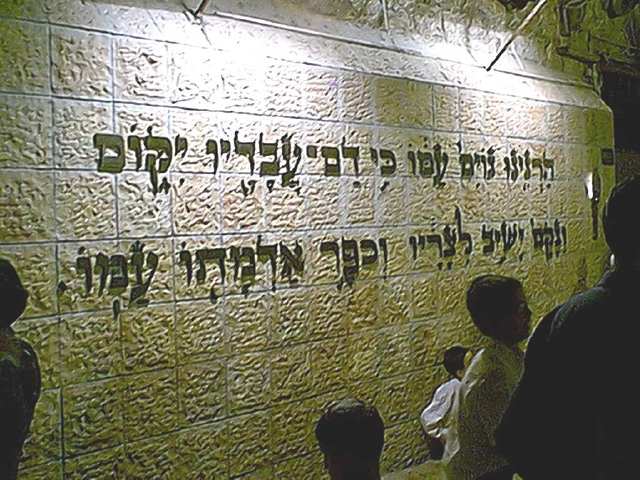Jerusalem!
In the first week of October, I finally made it to Jersulem. I spent most of the time in the Old City; that was the Jerusalem I really wanted to see. My friend Cordula and I stayed at the Petra Youth Hostel for less than $5 per night. We were near the Jaffa Gate, next to the so-called Tower of David. We had a great view of the Old City from the roof of the hostel. On my right in the photo, is the Church of the Holy Sepulchre.
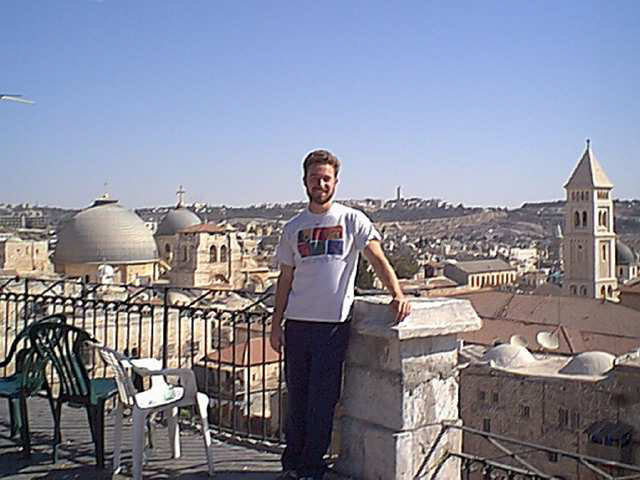
Here is the view from the Tower of David, now a history museum. The building in the bottom left with all the bedding and tents set up is the hostel where we slept. From the tower, one can see the Dome of the Rock(gold building on right) and the minnaret of the Al Aksa Mosque just to it's right. Below the Dome of the Rock, but not visible here is the Western Wall, or Wailing Wall, where many were gathering to pray for the feast of Succoth. Behind the Dome of the Rock is the Mount of Olives sloping down into the Kidron Valley. The city is very tightly built, most roads are not accessible by automobile.

Inside the Tower of David Museum, some of Chihuly's works were on display.
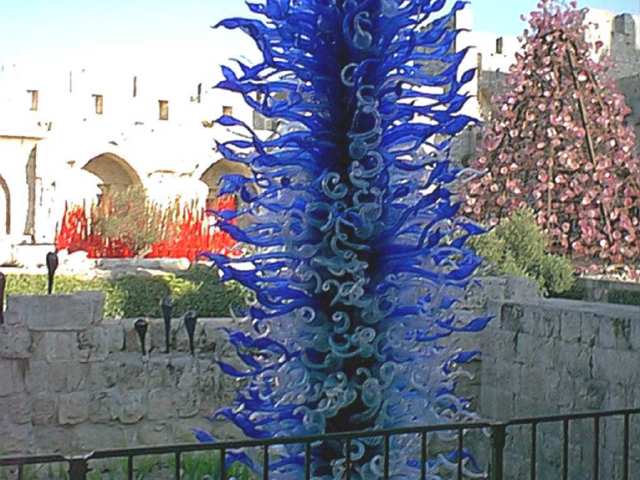
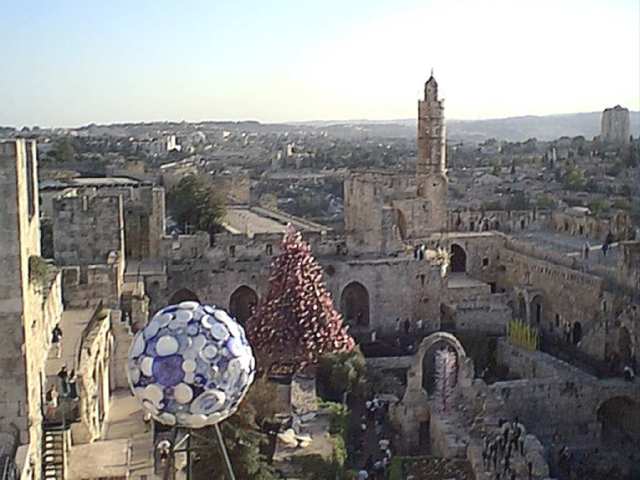
This view on the right, also from the Tower of David, looks down on the rest of the castle and out toward a newer part of Jerusalm.
I was planning to help represent my congregation, Kehilat Ha Carmel, at an annual festival March in the downtown area but I never did find them! There were thousands of people meeting all over the valley. (left photo) From an overpass, I could look up the hill toward the Old City. The hill here is the actual Mount Zion on which is currently built the Church of the Dormiton. (right photo) Looking to the right, where many marchers were gathering, is the Kidron Valley. The far hills are the site of the original City of David.
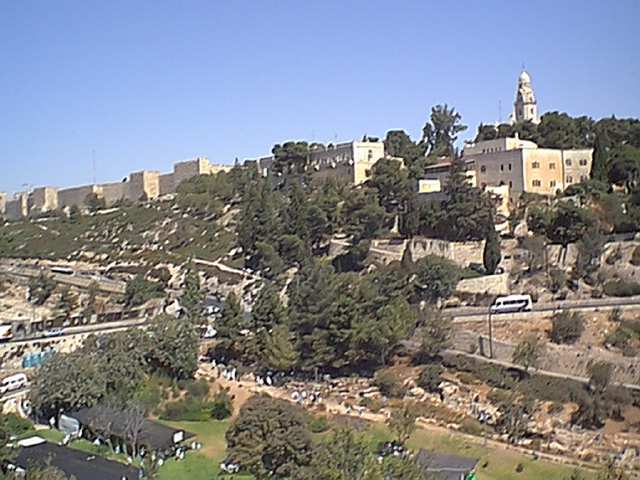
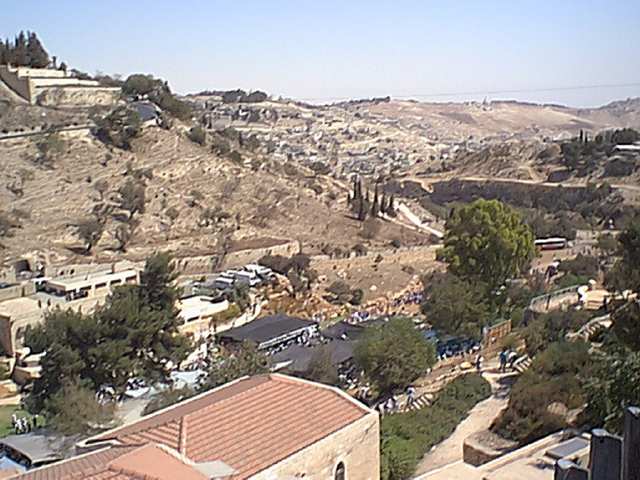
Although the Church of the Holy Sepulchre is not impressive on the outside, the inside is very ornate. The place is definitely the penultimate cobwebbed, imposing, reverence-demanding old Catholic Church. The building is actually divided among five denominations and is claimed to be the exact location of Golgotha, where Jesus was crucified at the end of the Via Dolorosa. Unfortunately, I think the decorator was from Hollywood!
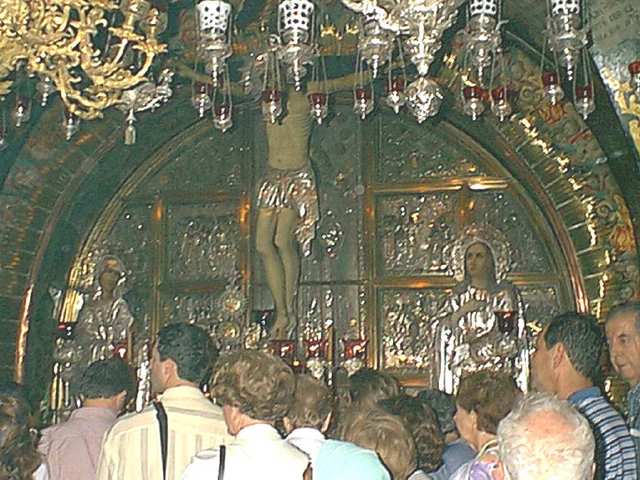
Below is what is called the Stone of Unction just inside the front doors of the Holy Sepulchre. My travel guide says the five denominations claim that this stone(to which the lady is kneeling) is the place where Jesus was anointed. Of course, I'm not sure what they're talking about since John the Baptist baptized Jesus in a river!
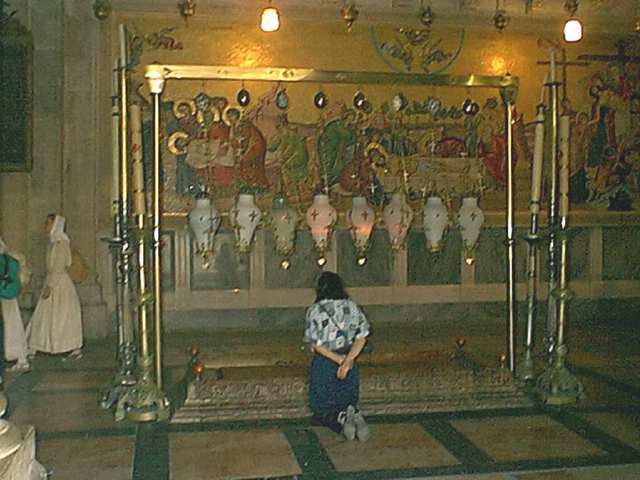
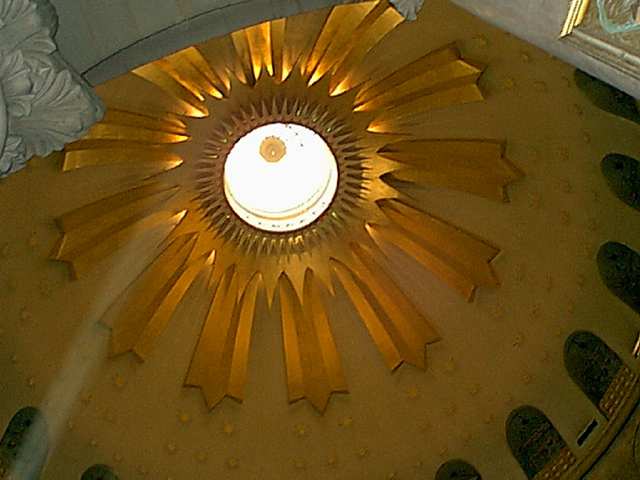
On the right, above, is the ceiling of the dome of the Holy Sepulchre. This was a very large room, one of the few with natural light streaming in. Below is a prayer room below the dome that many people were in line for. To pray or be blessed, I suppose; but I haven't figured out what its great significance is yet.
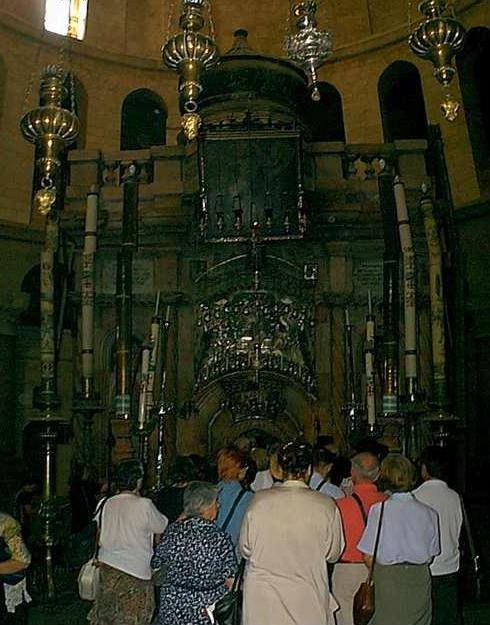
The Old City is divided into four quarters: Arab, Christian, Jewish and Armenian. In the Jewish quarter is the Hurva Synogogue. It was built in the 18th century but was destroyed on two occasions by different conquering empires. It was rebuilt only to be ruined a third time after the war in 1967. The arch has been rebuilt as a modern addition but photos show that the original structure was much taller.
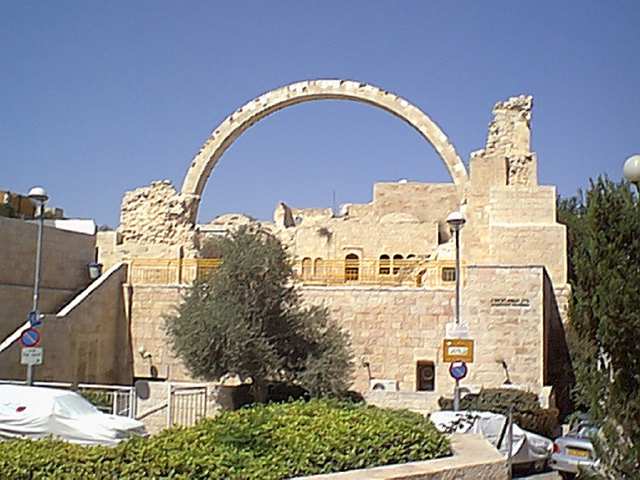
No trip to the Old City would be complete without a trip to the Western Wall. For me, this was the most important part of the visit to the Holy City. It is the most "real" and un-modernized ancient member of the city. The Jews pray there, not because the wall is magical or something, but because it is as close as one can get to the old Temple ever since the Dome of the Rock, where the Moslems claim Mohammed ascended to heaven, wass built over the Temple Mount. Jerusalem seems to be the epicenter of the conflict in Israel, but the Wailing Wall and Dome of the Rock are the focal point of the conflict in Jerusalem!
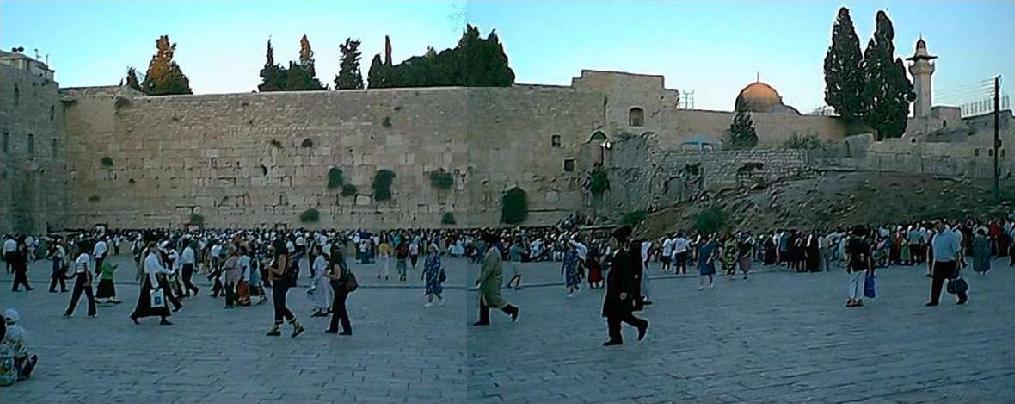
I really felt a sense of awe when I arrived at the wall. Mostly thinking about the history of the place and just how old those stones are. I had a good chat with an old Jewish man there. He seemed to be just walking around with a smile on his face, looking for someone to talk to. I got to ask him lots of questions about the wall's significance and why, for Succot, so many people had a certain four plants that they were waving around and chanting with. He told me that the plants are called Succot, giving the name to the festival. They are the four plants that biblically represented the bounty of the land of Israel. The area around the wall is divided into two seperate sections, one for the men, one for the women. I had long pants on, so my only other requirement for entry was to take one of the kippa's that were available for public use and put it on my head. I knew enough Hebrew by then to ask if I could take photos. The guards there told me no problem at all.
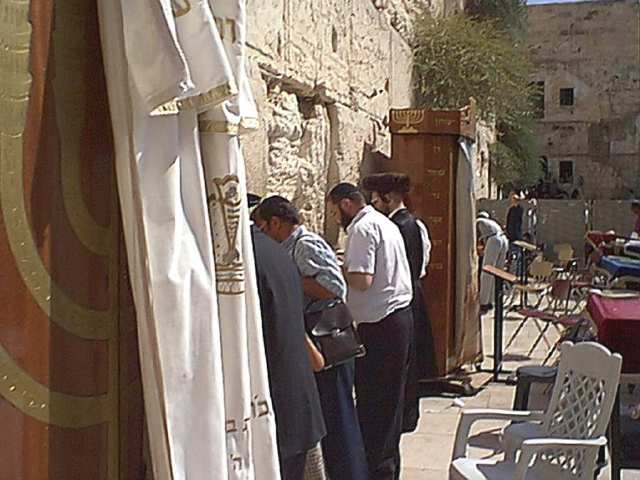
In the picure above, you can see the partition in the background, dividing the men from the women. The tables were filled with many books of prayer and songs of worship. Occasionally someone would begin a chant, and many would join in the chorus. All the cracks of the wall were filled with scraps of all kinds of paper -receipts, advertisements, notebook paper- with prayers scrawled about. Most of the men kiss the wall when they approach it. Some sit in a corner writing. Old men discuss the words written in the books.
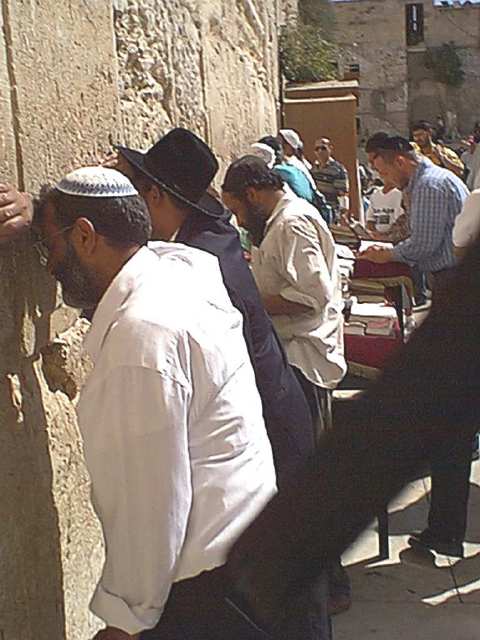
Walking to the left, there is a tunnel leading deep under the streets above. This tunnel is lined with shelves full of books, packed with people praying(only men in this area), and had some additional chambers that were behind locked iron gates at the time I was there. A few beggars sat in the crowd calling for money; they seemed to be doing good business -so to speak...
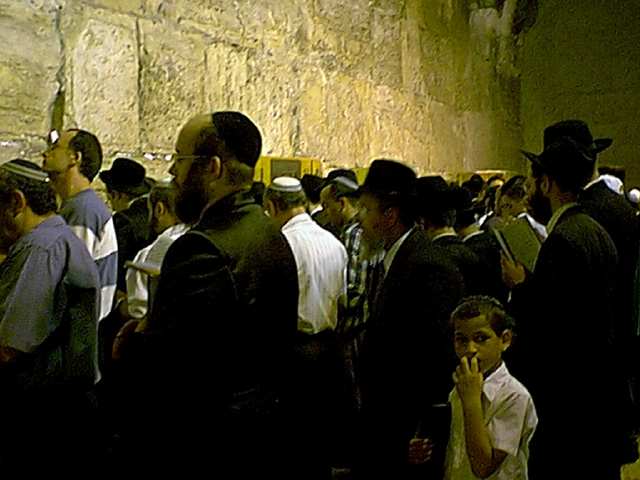
At the end of the corridor was this inscription, of which I have yet to find the interpretation or the energy to look up.
